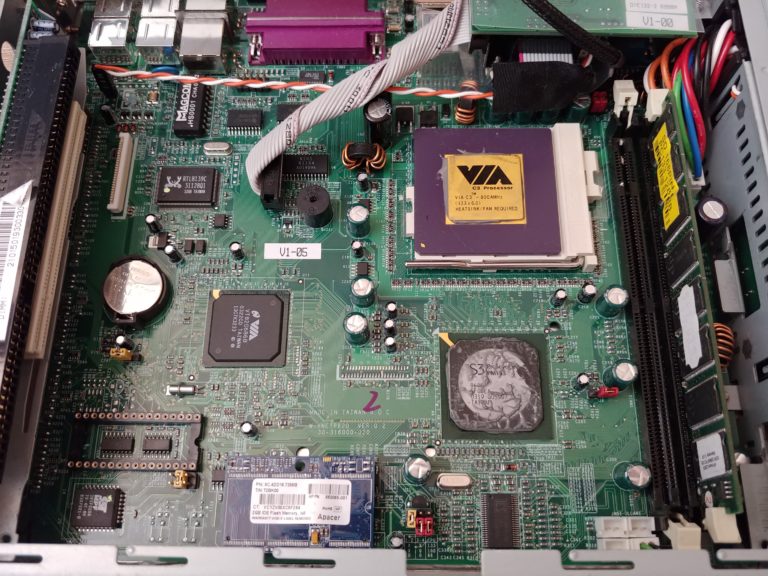First post, by Danger Manfred
Hello!
I have grown extremly fond of my Neoware CA2 thin client, and wanted to tell you a few lesser known facts about it!
When you buy one, it says it comes with a VIA C3 800 MHz CPU, which is normally an Ezra-T. Mine at least actually had a Nehemiah 1200 MHz inside instead, that was just downclocked to 800, but can also be overclocked to 1400 on default voltage, although I would only recommend that if you swap the passive cooler for any regular S370 or S462 cooler that fits inside the restricted height.
Note that these VIA C3 CPUs are only about as fast as a Pentium 3 with half that much clockspeed, but they are excellent for throttling via SETMUL, since they have two additional features that can be toggled off to fine tune their speed (branch prediction and instruction cache in addition to L1 and L2 cache if memory serves right).
It also has SB Emulation on board, which is great in terms of compatibility, but the quality is lacking imho.
The S3 ProSavage graphics are excellent - a bit slower than the very similar S3 Unichrome used in similar thin clients like the Igel-5/3, but much better DOS compatibility. Still faster than a Voodoo Banshee.
Lastly, they normally come with a PISA riser, that is a riser card allowing you to add either a PCI or ISA card. Personally I use it for a sound card, since I find the graphics card good enough and this way I can enjoy great original hardware FM and wavetable synthesis. The length of this expansion card is restricted to about the length of a Voodoo 1 or AWE64. A Voodoo 2 and all AWE32 variants are too long. If you want to use a SIMMconn adapter, that's only possibly on an AWE64 gold, because on the normal AWE64 variants, the SIMMCONN stands over the backside of the PCB and wouldn't fit inside the case.
Often enough, you buy one and that riser is missing. They cost shit tons of money on the internet. However, an aquaintance of mine designed replacements that you can get printed on your PCB service of choice for close to no money at all.
I'll upload these if anyone is interested.
My only issue with this fantastic little thin client is that the Nehemiah I got is not only faster, but unfortunately also uses more power than the Ezra-T that would normally be inside.
Since I added an IDE-to-CF adapter and a 32 GB CF card as well as a sound card, the inside is really full, and air flow isn't great, so I had to replace the passive cooler with an active one since I want to use this for extended periods of time without worrying about temperatures. I'd like to run the fan at 5V instead of 12V, but for that I'd need an Ezra or Ezra-T instead of the Nehemiah, but I cannot find any online, only Samuels (too slow, no L2 cache) and Nehemiahs.
If anyone could point me to someone who is selling or trading, I'd be really appreciate that.
Until then, I guess I'll just deal with the noise, because this is such a convenient way to play DOS to Windows 98 games on original hardware and it's only the size of a PS2 Fat.
